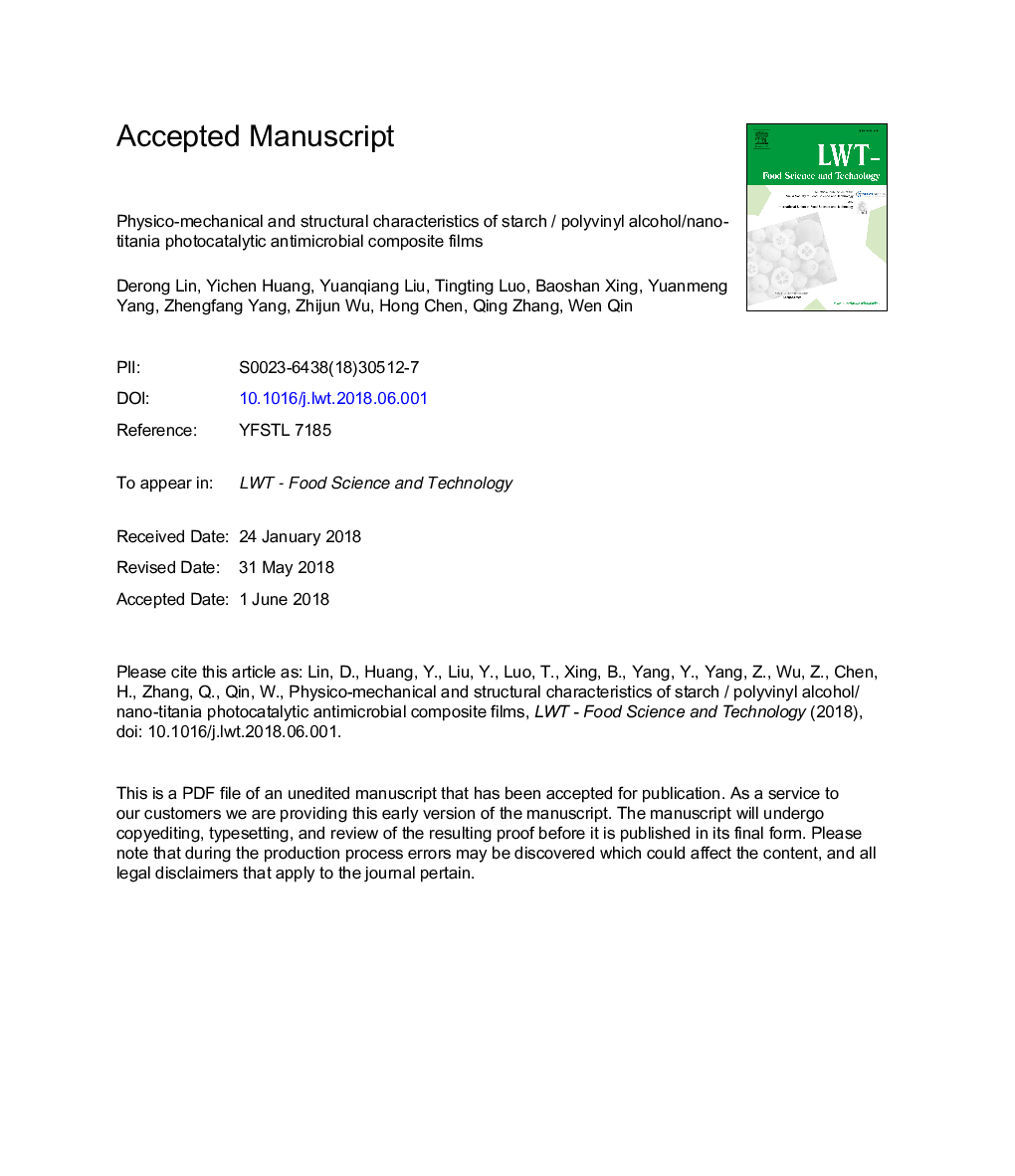| Article ID | Journal | Published Year | Pages | File Type |
|---|---|---|---|---|
| 8890770 | LWT - Food Science and Technology | 2018 | 37 Pages |
Abstract
Nano-titania has high photocatalytic activity and can degrade pollutants and wastes. However, there is relatively little research on nano-titania involved in biodegradable packaging composite membranes. In this experiment, the starch/polyvinyl alcohol/nano-titania (S/P/T) composite membrane was prepared with a flow casting process. The effects of different nano-titania contents on the physico-mechanical, structural, antimicrobial, and photocatalytic characteristics of the composite films were investigated. Nano-titania enters the space between the starch and PVA molecules and facilitates the migration of oxygen and water vapor improving the physical and mechanical properties of the films. The stability and antibacterial activity of the films increased significantly upon addition of nano-titania. Nano-titania composite films have obvious photocatalytic activity, and its photocatalytic activity increases with nano-titania mass fraction. The photodegradation activity of S/P/T1:1: 0.012 composite film was the highest; it can reach 37% in 90â¯min. The bacteriostatic effect was also the best, presenting halos of 4.5â¯cm and 3.5â¯cm for Escherichia coli and Listeria monocytogenes, respectively. In summary, the addition of nano-titania helps the composite film to be antibacterial and degradable. The preparation of the composite film provides an ideal choice for the packaging of foods.
Related Topics
Life Sciences
Agricultural and Biological Sciences
Food Science
Authors
Derong Lin, Yichen Huang, Yuanqiang Liu, Tingting Luo, Baoshan Xing, Yuanmeng Yang, Zhengfang Yang, Zhijun Wu, Hong Chen, Qing Zhang, Wen Qin,
